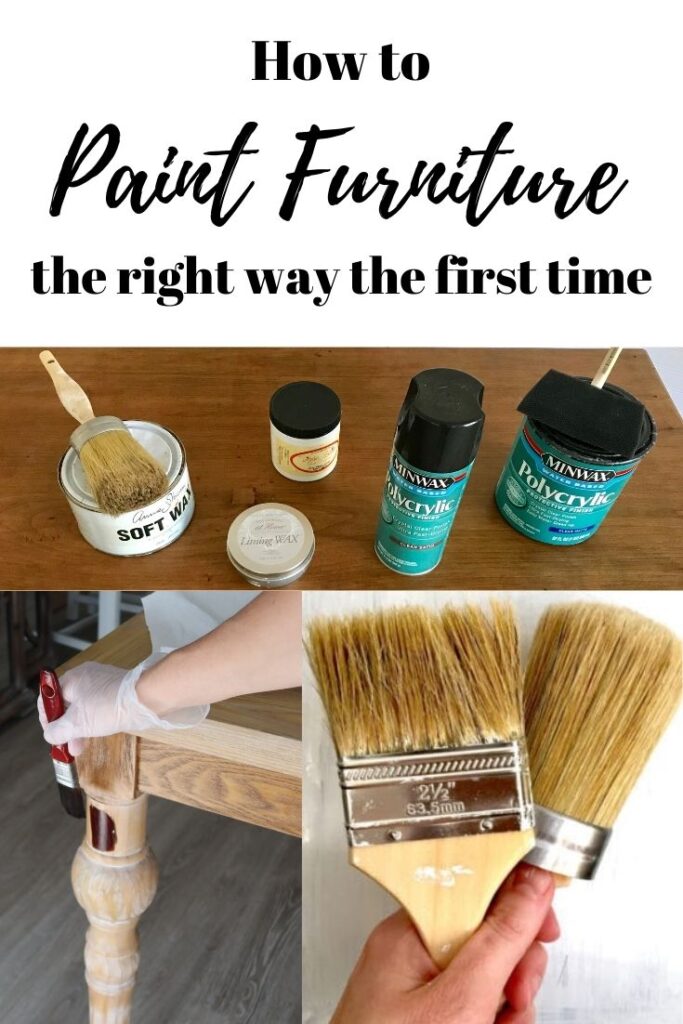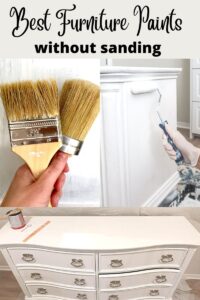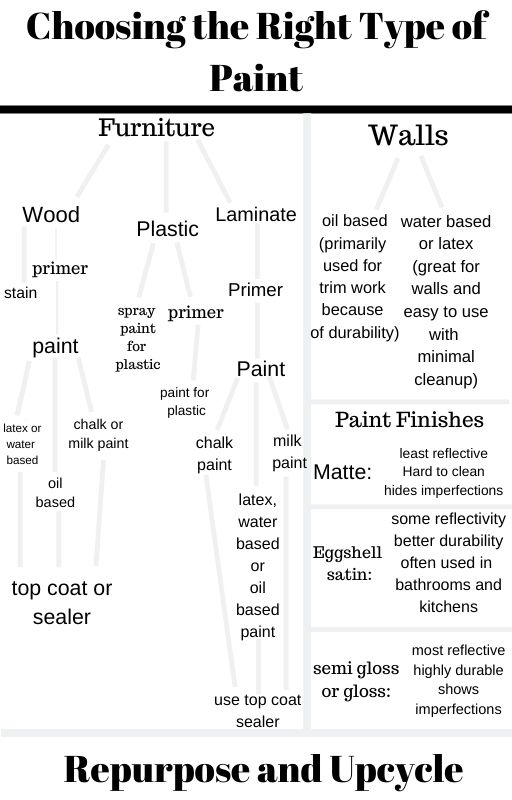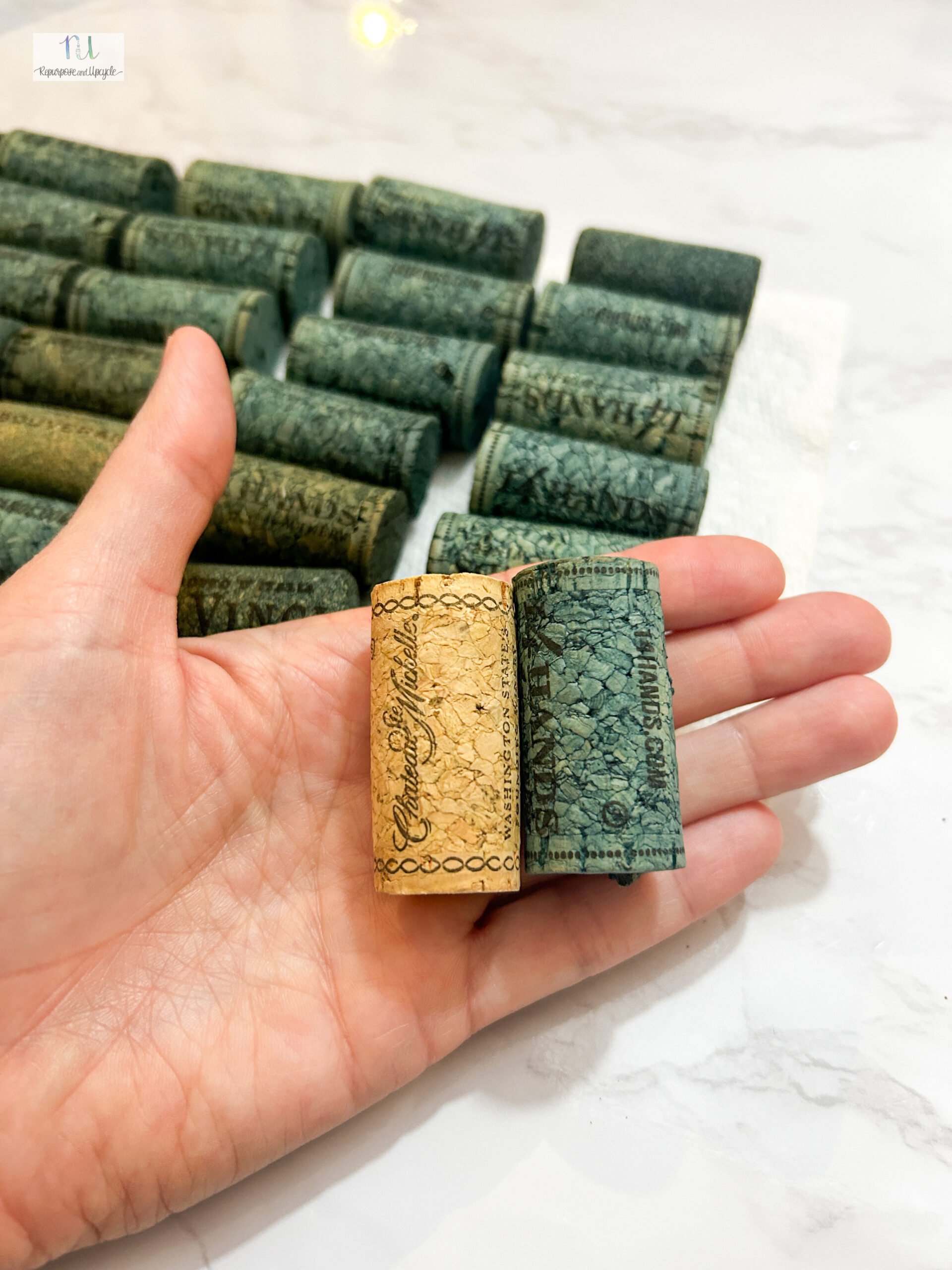Learn how to paint furniture the right way the first time. This easy step by step tutorial will tell you all about paint for wood furniture.
Furniture painting has become very popular over the last 15 years. As a matter of fact, if you haven’t painted a piece yourself I’m sure you know someone who has. That being said, refinishing furniture isn’t always for everyone. Is there a right or wrong way to do it? Yes and no. There are different methods and ways to paint different types of surfaces. My hope is that you will leave this post with a good basic idea of how to paint furniture. If anything, I hope you will understand the steps you need to take to give that surface a makeover.

Disclosure; this post contains affiliate links. As an Amazon Associate I earn from qualifying purchases. This disclosure statement refers to the rest of the Amazon links in this post. See more on my disclosure page.
How to paint furniture the right way
There are a couple things you need to know before you begin. You need to ask yourself a few different questions.
Know what the furniture piece is made from
This is the first and very important question that you need to ask yourself before you begin. There are a handful of different answers to this.
Most likely the piece of furniture is made from;
- solid wood
- wood veneer
- laminate
- metal
- plastic
Prepare the surface for paint by sanding
Once you’ve determined the type of material, check out how to prepare the surface for paint.
Side note; you can choose not to sand the surface and use a liquid sandpaper product. This works well with laminate surfaces and thin veneer surfaces that are hard to sand anyways.
Solid wood; If the surface is made of solid wood, it’s always a good idea to sand it with an 80-150 grit sandpaper. Use an 80 grit if it has varnish or sealer on top and end with a 180 grit sandpaper. You can go straight to the 180 grit sandpaper if it’s raw wood.
Wood veneer; This is tricky because you don’t want to sand all the way through the wood veneer surface. My best advice is to sand very lightly with a fine grit sandpaper like 180-220. If you are using a chalk style paint, you maybe can get away without sanding (although I would still give it a very slight sanding with at least 220 grit). Make sure to test a small area and make sure the chalk style paint will adhere well directly to the surface if you decide not to sand.
Laminate; Laminate furniture (like IKEA furniture) is made from synthetic materials like plastic particles. There is no wood in laminate furniture. Can you sand laminate furniture? Most of the time, no. Skip straight to the cleaning and primer step. The biggest thing you need to know is that you HAVE to use a bonding primer before you paint it. You can see how I painted a laminate IKEA desk here, and a full list of painting laminate tutorials here.

Metal; Typically you don’t sand metal furniture unless you need to remove rust or a heavy finish. If you do need to sand I would only use a fine grit sandpaper like 320 or finer. Otherwise skip to the next step.
Professional tip; rather than using sandpaper, use a liquid deglosser like Krud Kutter Gloss off to add a bit of “grit” to a smooth surface. This works great when painting surfaces like wood kitchen cabinets.
Remove any debris by cleaning the surface
Use a tack cloth or another cleaning cloth to remove any debris on the surface. Don’t skimp on this step!
Use a good bonding primer
Primer is key. Let me say that again; Primer is key! See a list of my favorite primers for wood here!
Do you need to use a primer with chalk paint?

My best advice is to always use a primer, even with chalk paint. I even wrote an entire post with a video all about this.
Here’s the gist of it; Primer does so much more than to just help bond the paint to the surface. It covers up old paint and varnish that might “bleed through” the new paint, it covers up old smells, and it helps make the new paint look more smooth. Because of this, why not use it! It can’t hurt.
What about using primer as the finish coat of paint? Nope, don’t do it! You can read more about the why’s in that blog post.
Professional tip; lightly sand the primer with a fine grit sandpaper before you apply paint. This ensures a super smooth finish.
Apply paint
It’s time to apply paint to the piece of furniture!
Wait, what paint should I use?
There isn’t a straightforward answer to this. Just know this; if you have prepared the surface well (sanding, primer) almost any type of paint should work. That being said, not all paints are created equal. As you paint more furniture and experiment with more brands, you will find your favorites.
Make sure to check out the best furniture paint without sanding post that details my favorite furniture paint that have been tested by me personally!

Also, before you head to the hardware store and become overwhelmed, read this post about how to choose the right type of paint for any surface. I’ll attach my handy dandy chart I created below. For more details head to that post.

Some of my favorite furniture paints are;
- DecoArt Satin Enamels– for a smooth factory like finish that does not require a top coat! See an example here. See a dresser makeover where I used this product here. This product hardens to a super durable finish. Would be great for kitchen cabinets and high traffic surfaces.
- Annie Sloan Chalk paint– My all time favorite chalk paint and the original chalk paint. See a table makeover with it here. The best paint for a pure matte finish. Also great if you want to distress furniture with sandpaper. This paint requires a top coat (furniture wax or a higher traffic sealer).
- Fusion Mineral Paint– This is a great paint for furniture that has a more durable finish than chalk paint. It also comes in a wide variety of colors.
Apply a sealer
This is an important step that you don’t want to skip. When you choose a paint product, the manufacturer will probably give you a “recommended” sealer to go with it. I would follow those instructions.
A few things to note; oil based Polyurethane products do have the tendency to yellow over time. If you need a sealer for a high traffic finish but don’t want to worry about yellowing, try my go-to sealer Polycrylic.
Professional tip; use a fine finish roller to apply the sealer (if it’s liquid and not wax) for a smooth finish.
I hope I answered all your question about how to paint furniture! I’m confident that if you’ve followed these steps you will create painted furniture that will last for the long haul.
How to Paint Furniture the Right Way the First Time

Learn how to paint furniture the right way the first time with this easy tutorial.
Materials
- sandpaper
- liquid deglosser
- primer
- paint
- paint brushes
- rollers
- gloves
- top coat or sealer
Tools
- sander
- paint sprayer
Instructions
- Remove all hardware
- Prepare the surface for paint by sanding if necessary
- Remove any debris by cleaning the surface with a tack cloth
- Apply a good bonding primer to the surface with at least one coat
- Sand the primer with a fine grit sandpaper - not necessary but will ensure a smooth finish
- Apply paint with 1-3 coats
- Apply a top coat or sealer
Notes
Make sure you know what the surface material of the furniture piece is made from before you begin the makeover. This will decided whether or not you sand it, add primer, etc.
Professional tip; rather than using sandpaper, use a liquid deglosser like Krud Kutter Gloss off to add a bit of “grit” to a smooth surface. This works great when painting surfaces like wood kitchen cabinets.
Thanks for stopping by,
Lindsey**





